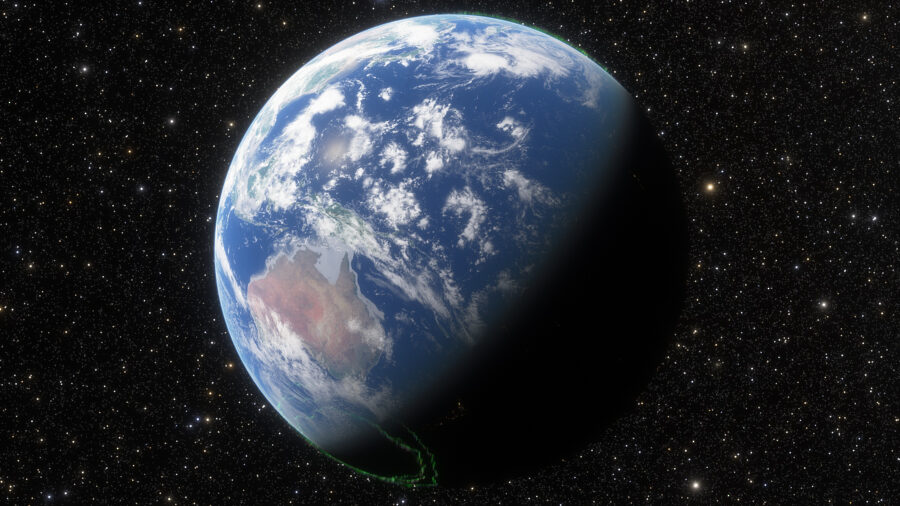Ocean World Orbiting Sun-Like Star Discovered?
A water-covered planet just under twice the radius of Earth has been found 245 light-years away.

A team of scientists has found an elusive ocean-covered water world orbiting a sun-like star 245 light-years away. The discovery was made using data from NASA’s Transiting Exoplanet Survey Satellite (TESS). It was later confirmed using ground-based telescopes. Known as TOI-1231b, the planet is just under twice the radius of Earth.
According to Science Alert, the planet orbits a star slightly smaller than Earth’s Sun in just 4.9 days. Density measurements suggest that its atmosphere may be evaporating. This would cause the ocean world to become barren.
Led by Iskra Georgieva of Chalmers of Sweden’s University of Technology, scientists believe the discovery could help understand why there aren’t many worlds between 1.5 and 2 Earth radii.
The ocean world discovery, set for publication in Astronomy & Astrophysics, is currently available via arXiv. Since the 1990s, scientists have discovered over 5,300 exoplanets using transits and radial velocity. According to the research, transit observes changes in starlight when an orbiting exoplanet passes between Earth and the star.
Meanwhile, radial velocity measurements search for changes in wavelength as the ocean world is pulled by the exoplanet’s gravity. These methods are better at detecting larger planets in close orbits, so most of the exoplanets we’ve found are like this. However, some patterns can’t be explained by technology, such as the small planet radius valley.

As such, very few ocean world planets, between the size of super-Earths and mini-Neptunes, have been discovered. The reason for the gap remains unclear, but recent evidence suggests that mini-Neptunes may be shrinking due to their atmospheres being stripped away by the heat of their stars. It is still unclear whether this mass loss is driven by the star or an internal process.
To better understand this gap, scientists are searching for more ocean worlds in the radius valley that are undergoing this process. Using data from NASA’s TESS telescope and the High Accuracy Radial Velocity Planet Searcher (HARPS) spectrograph, researchers found an exoplanet with an orbital period that suggests it is undergoing photoevaporation.
The exoplanet’s radius was also determined using transit data, which measures the amount of light blocked by the planet during its orbit. This led to a measurement of 1.99 Earth radii while the HARPS spectrograph measured the star’s radial velocity. The science states that mass and radius can then be “combined to derive density, from which composition can be inferred.”
While TOI-733 b’s composition is unknown, scientists created models to determine that it may have lost its original hydrogen and helium atmosphere. Interestingly, this has been replaced by a secondary atmosphere made of heavier elements. It’s also possible that the exoplanet is an ocean world, which would mean it still has an atmosphere rich in water vapor.
If this is the case, the exoplanet would not have undergone any significant atmospheric mass loss due to its water vapor being resistant to photoevaporative processes. Some of these answers go beyond the scope of the research. But finding the answers will have broad implications for the understanding of exoplanets.












